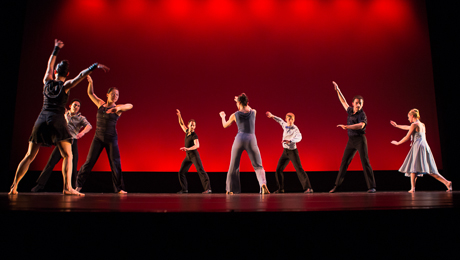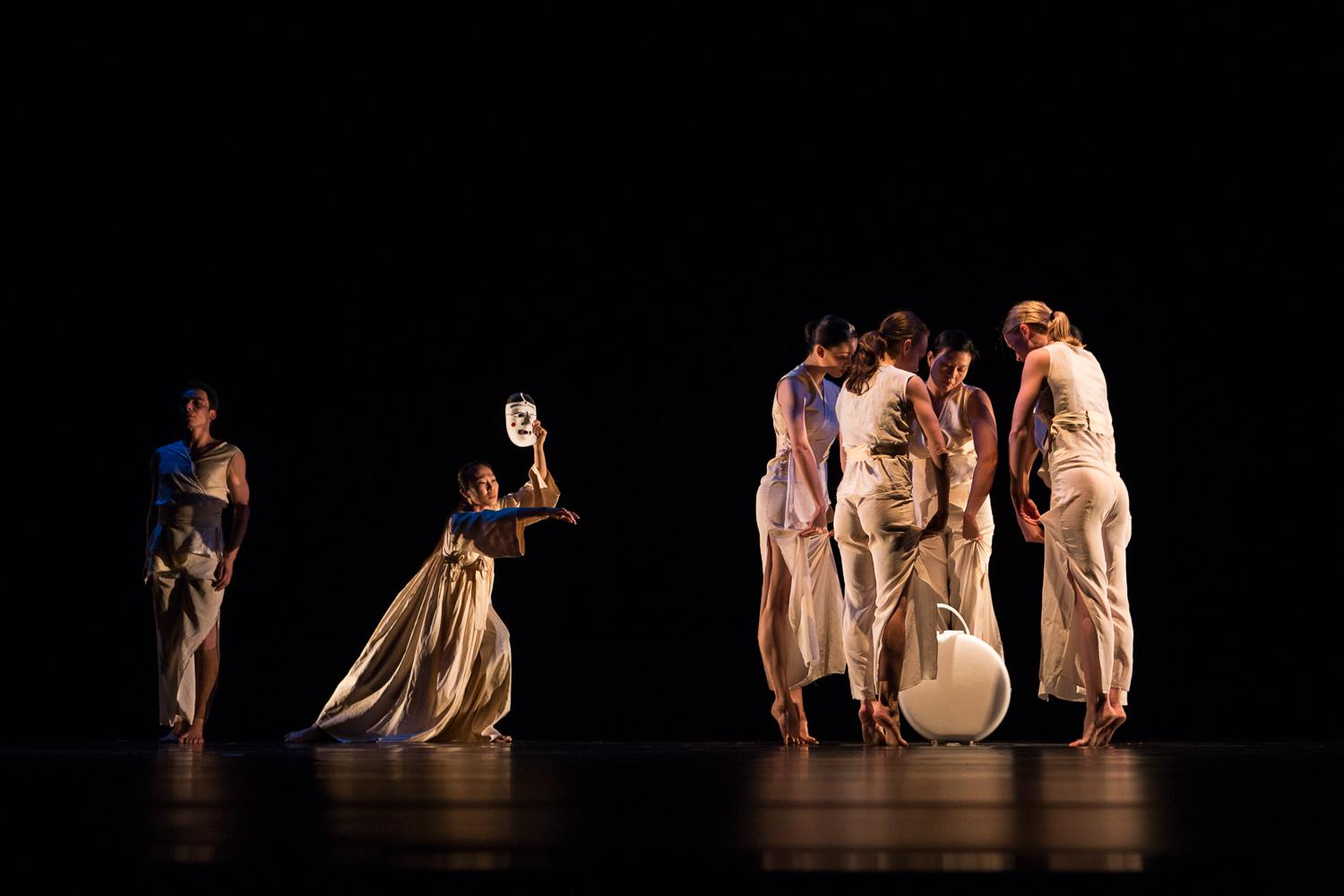From the anguish in “Revenant Elegy” to the honesty of “Khaybet,” each dance number in “Four” showcases Dana Tai Soon Burgess’s passion for exploring human emotion through delicate yet complex choreography.
Mr. Burgess, associate professor and chair of the George Washington University Department of Theatre and Dance, premiered the dance concert at the John F. Kennedy Center for the Performing Arts this weekend. The show came together with support from the GW Arts Initiative, which awarded Mr. Burgess an incubator studio fellowship. Incubator studio fellows are GW faculy members selected to receive a stipend or teaching release to focus on creative projects. “Four” also featured two GW alumnae: Sarah Halzack, B.A. ’06, and Katia Chupashko Norri, B.A. ’05.
“The incubator fellowship allowed me the time to research and experiment with the new dances for the Kennedy Center and the National Portrait Gallery performances,” Mr. Burgess said.
Dance enthusiasts filled the National Portrait Gallery’s Kogod Courtyard back in November for Mr. Burgess’s debut of “Homage,” a piece from “Four” that chronicled the history of dance in the U.S. It was created while Mr. Burgess served as a resident choreographer for “Dancing the Dream,” the Smithsonian’s first-ever exhibit on American dance.
For the performance of “Homage” at the Kennedy Center, Mr. Burgess added some extra flair through vivid lighting and background projections. The performers moved to an arrangement that mixed musical compositions with interviews of celebrated dance stars. During a recording of Bob Fosse speaking, the dancers accented his words with his signature jazzy punches. While Martha Graham’s voice echoed across the stage, they twisted their bodies into her famed contractions.
“Four” also included the solo “Khaybet,” inspired by Mr. Burgess’s travels to northern Pakistan. After coming across women covered from head to toe in cloth near the Afghan border, he sought to represent how emotions permeate even under a veil. The soloist conveys a woman reliving moments of pain before dying. Her distress is palpable even though she is completely wrapped in orange silk.
“I enjoy making works that illuminate stories from our shared human condition. I love it when audiences find that the stories I work into my dances resonate with their own life experiences,” Mr. Burgess said.
“Leaving Pusan,” a graceful meditation on crossing borders both in the physical and spiritual world, is based on Mr. Burgess’s great-grandmother, who left Korea in 1903 to settle in America. The dancers don white costumes, the traditional Korean color of mourning, while the principal wears a Korean mask.
The National Gallery of Art commissioned the finale, “Revenant Elegy,” in conjunction with its exhibit “Diaghilev and the Ballets Russes, 1909-1929.” The most visual of the four, “Revenant Elegy” evokes a masquerade ball, with the performers bedecked in gauzy black gowns. Two dancers in pink symbolize a woman in different stages of her life as she reflects on her youth and a love lost.
Mr. Burgess explained that the goal of each piece in “Four” is ultimately to unite his audience through universal perspectives, experiences and emotions.
“Dance is a global language that communicates across cultural and societal boundaries,” he said. “Everyone around the world dances. Before we had verbal or written forms of communication, we danced.”

























